|
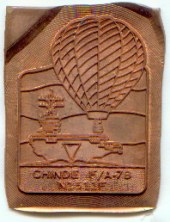 The basic metal used in making cloisonne pins is copper. It comes in long strips, which are cut into pieces to match the length of the desired pin.
The basic metal used in making cloisonne pins is copper. It comes in long strips, which are cut into pieces to match the length of the desired pin.
A die cut is prepared of the pin details, and using a die press machine, the outlines of the pin are pressed onto the metal strip. Excess copper is trimmed away to give the pin its size.
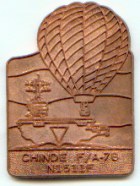 Each copper design is passed into an open flame heat treatment to remove any foreign particles. Each copper design is passed into an open flame heat treatment to remove any foreign particles.
An acid treatment comes next to clean off stains. The number of such treatments depends on the complexity of the design; e.g., the more colors there are, the more acid treatments are required.
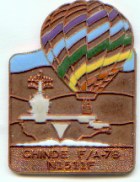 Generally, enamel is used for coloring. It comes in powder form and is mixed with water. The enamel is added to the pin by using a needle for small areas and a brush for larger areas. The heat treatment allows the enamel to adhere to the copper. Generally, enamel is used for coloring. It comes in powder form and is mixed with water. The enamel is added to the pin by using a needle for small areas and a brush for larger areas. The heat treatment allows the enamel to adhere to the copper.
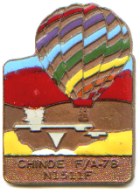 One color is applied at a time, followed by a heat treatment. Extra colors and detail prolong the process. One color is applied at a time, followed by a heat treatment. Extra colors and detail prolong the process.
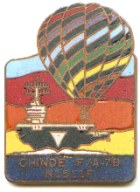 After coloring, a sharpening stone or electric grinder is used to sand the enamel surface to remove the excess. Sanding will bring out the details. Following any touch-up of imperfections, another heat treatment is required. After coloring, a sharpening stone or electric grinder is used to sand the enamel surface to remove the excess. Sanding will bring out the details. Following any touch-up of imperfections, another heat treatment is required.
Various grinding polishers are used to polish the surface. Fasteners are soldered to the back.
A "gold bath" is given to each pin to provide for the gold plating of the copper parts.
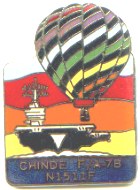 The true artistic talents of the maker are exhibited in the final step of smoothing the pin, a very detailed process. Each pin is sanded to bring out the fine lines of the design. If too much pressure is used in the sanding machine, the surface will be ruined; if just the right amount of pressure is used, a high quality product results. The true artistic talents of the maker are exhibited in the final step of smoothing the pin, a very detailed process. Each pin is sanded to bring out the fine lines of the design. If too much pressure is used in the sanding machine, the surface will be ruined; if just the right amount of pressure is used, a high quality product results.
'Chinde' hot air balloon is owned by Captain Chris McKelvey, USN Retired, an experienced hot air balloon pilot.
|